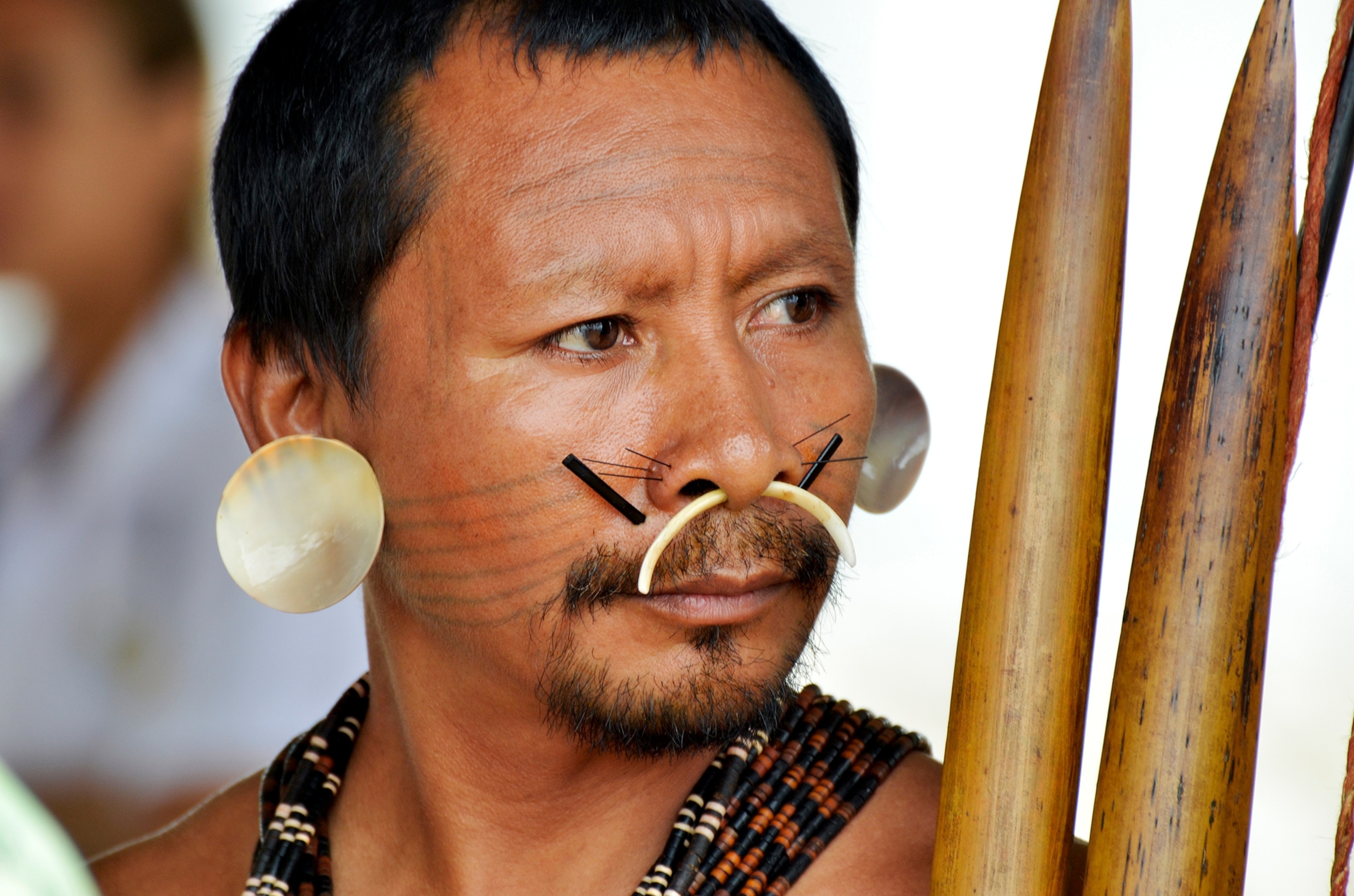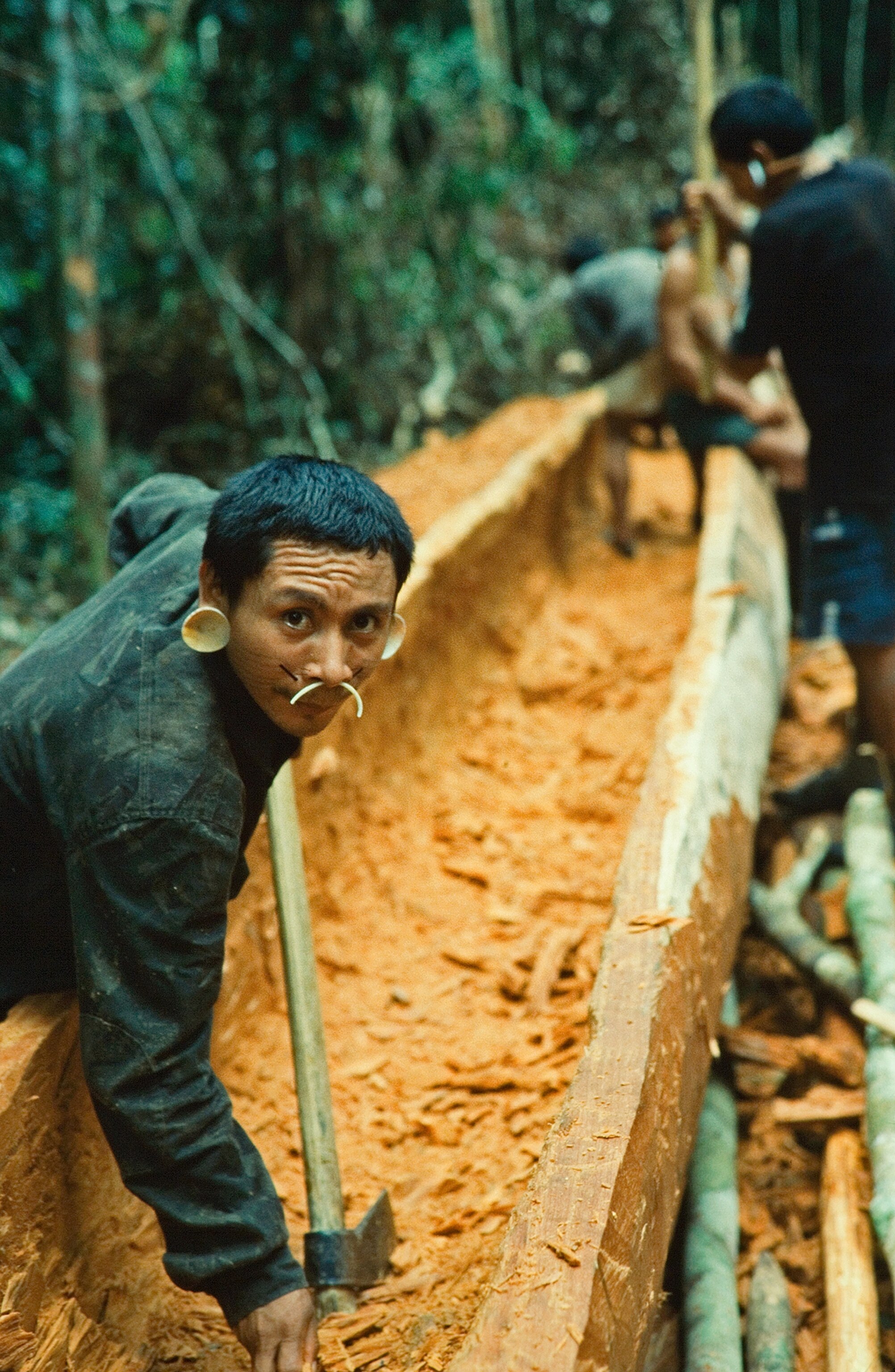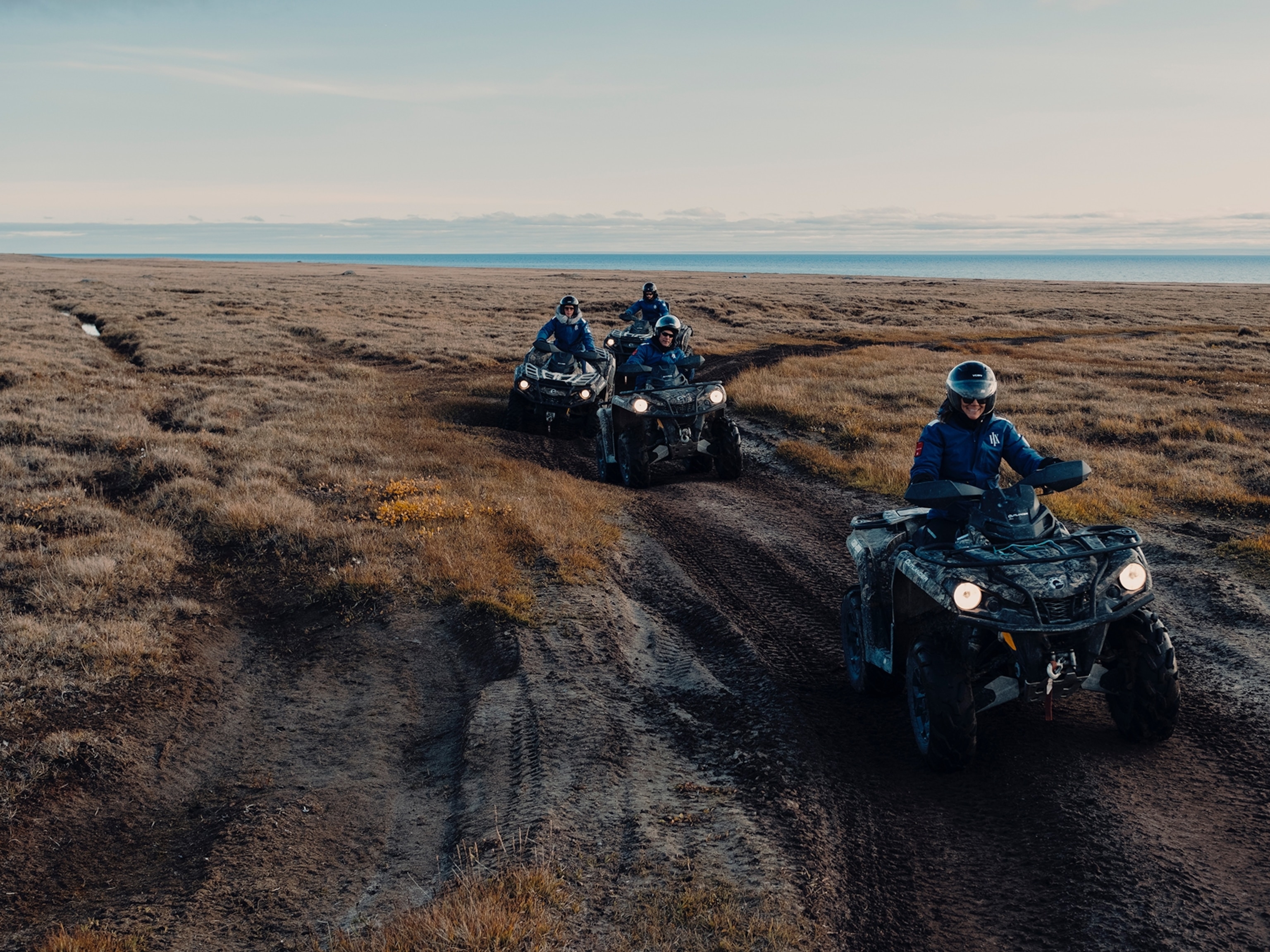
Renowned Shaman's Death by Snakebite Exposes Health Care Crisis in Amazon
His death at an early age shows the precarious existence of Brazil’s indigenous people.
Native communities in Brazil’s far western Amazon region have been shaken by the loss of a highly respected shaman, whose death from a snakebite has underscored the precarious state of the country’s indigenous health care system.
Relatives say Pajé Tepi Matis died in his village of Bokwat Paraíso on March 7, the day after he was bitten by a snake while out fishing. Situated deep inside the sprawling Javari Valley Indigenous Land, Bokwat Paraiso is one of three villages inhabited by the 320-member Matis tribe, who have gained international renown for their elaborate facial adornments and simulated whiskers that mimic the look of the jaguar.
“He was a very respected leader,” says Marcelo Marke Matis, Tepi’s nephew and a councilman in Atalaia do Norte, the closest city downriver from the Javari reserve. “The village is very sad. Everyone is sad.”
Roughly half the size of the Florida peninsula, the far-flung Javari reserve hosts six contacted tribes, including the Matis, as well as a dozen or so isolated and uncontacted tribes, making it home to the highest density of such communities anywhere in the world.
Brazil’s indigenous affairs agency, the Fundação Nacional do Índio, known by its acronym FUNAI, released a photograph of Tepi on its website, along with a brief statement expressing “deep regret” for his untimely death. It’s not clear how old Tepi was—FUNAI listed his age as 37, but others believe he could have been in his early 40s.
Marke says that vast distances and poorly supplied field clinics make response to medical emergencies extremely difficult for the Matis and other tribes. There was no antivenin in Bokwat Paraíso, Marke says, nor was a motorboat on hand to rush Tepi to Atalaia for treatment. “Medicines are scarce. There’s no boat. The distances are very long. How can someone survive?”
There are no airstrips in the Javari, and it can take days to travel by boat from communities in the interior to Atalaia. Marke says that only a helicopter evacuation could have saved Tepi’s life but that no helicopter was available. The Special Secretariat for Indigenous Health, the federal agency that could authorize such a measure, has come under harsh criticism from Brazil’s indigenous peoples for failing to provide their communities with adequate care. The health care crisis in the Javari reserve has been especially acute, with infant mortality rates running up to five times higher than the national average in recent years.
Tepi was an accomplished hunter and tracker and a superb backwoodsman. In 2002 he figured among a dozen Matis who joined a 34-man, FUNAI-organized expedition to explore the far southern flank of the reserve to protect a seldom glimpsed tribe known as the Flecheiros, or Arrow People.

On assignment for National Geographic, the late photographer Nicolas Reynard and I also joined the expedition, led by celebrated Brazilian explorer and indigenous rights activist Sydney Possuelo. When our story was published in August 2003, Reynard’s portrait of Tepi appeared on the magazine’s cover.
Among Possuelo’s most trusted scouts, Tepi displayed a high tolerance for discomfort and hard work in the course of the journey. He and his fellow Matis dashed adroitly across slippery log bridges and trudged barefoot up steep inclines under extraordinarily heavy loads. He invariably returned from hunting forays with an animal slung on his back to feed the rest of us, and he wholeheartedly embraced the expedition’s mission to gather vital information about the Arrow People while avoiding contact with them at all costs.
The Most Venerated Shaman
In the years since the expedition, Tepi became his tribe’s most venerated shaman, or pajé. That process began when he survived a previous encounter with a venomous snake, according to anthropologist Barbara Arisi, who lived with Tepi and his young wife and children for months in 2009 while conducting research for her doctoral thesis.
Left unconscious on that occasion while his companion raced to get help, Tepi somehow managed to drag himself nearly all the way home before collapsing outside his village. “Later on, Tepi said that the spirits of the forest had carried his body there,” Arisi wrote in a blog post on the site AmazoniaReal.

Following that near-death experience, Tepi felt called to the healing arts, says Arisi, who herself survived a venomous snake bite while working on a documentary film in the Javari in 2014. Arisi, now a visiting scholar at Vrije Universiteit in Amsterdam, says her life was spared because there was just enough antivenin in the nearest village to keep her alive during the 25 hours it took to reach the hospital downriver by motorboat. She says health officials denied a request from the nurse attending her to dispatch a helicopter.
Arisi says that Tepi and father-in-law Iva Arapa, who was also on the 2002 expedition, founded Bokwat Paraíso in 2013. Many of their people had perished from infectious disease, particularly malaria and hepatitis, in their previous village, and they were looking for a fresh start in a location they hoped would be healthier. “They were escaping death,” Arisi says.

In an impromptu rite one day during the 2002 expedition, Tepi helped prepare an infusion of psychotropic eye drops made from a mixture of water and the shavings of tree and liana bark. Fellow expeditionaries knelt one by one before him to receive the drops, which at first produced an intense, burning effect. But as the pain subsided, the concoction eliminated our fatigue and left each of us with an astonishing clarity of vision and heightened perception to see past the forest’s monochromatic screen of greens and rain-soaked browns. The Matis used the potion for hunting, Tepi said, and it was easy to see why.
The Matis were first contacted by FUNAI officials in the mid-1970s, in the days before the agency’s mission shifted to shielding Brazil’s isolated tribes from contact with the outside world. Tepi grew up in the period of demographic shock that followed contact, as epidemic illnesses swept through the tribe, killing many of its elders and knowledge-keepers. The younger Matis did their best to salvage tribal traditions, including their facial adornments and their knowledge of how to make the hunting potion. But the calamitous history that many Matis still remember makes the loss of Tepi all the more poignant—for his people and for allies of the indigenous movement everywhere.
Scott Wallace, a regular contributor to National Geographic, is the author of The Unconquered: In Search of the Amazon's Last Uncontacted Tribes. Follow him on his website and on Twitter.







